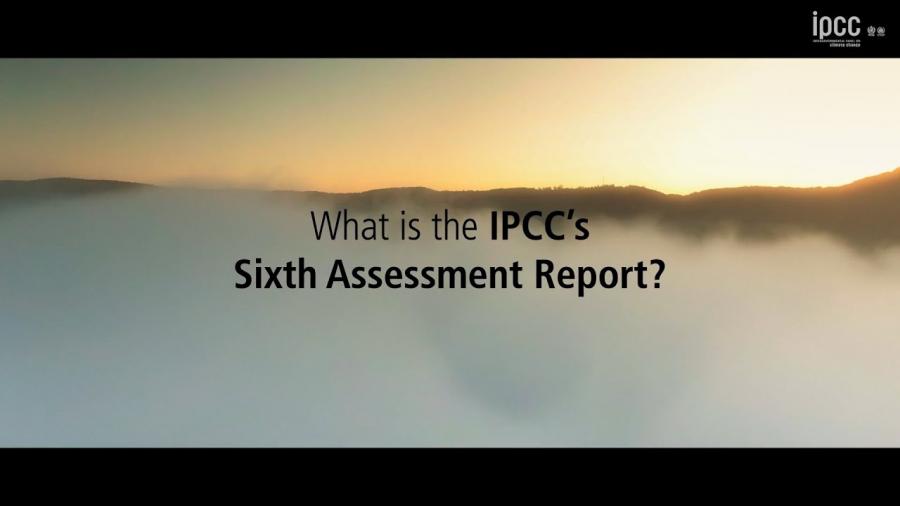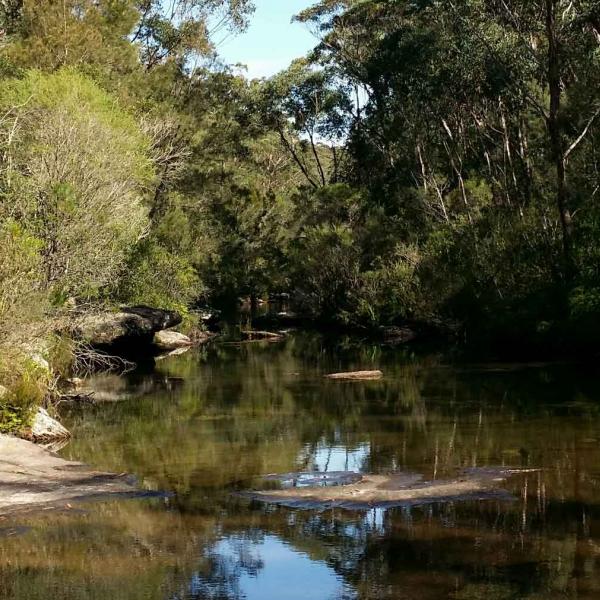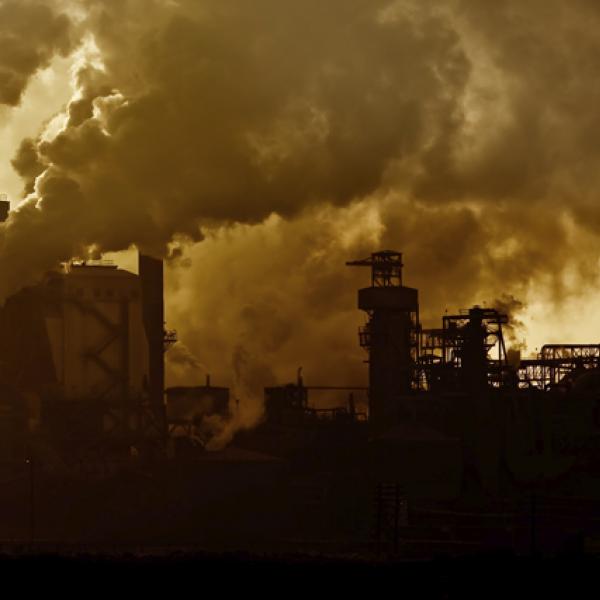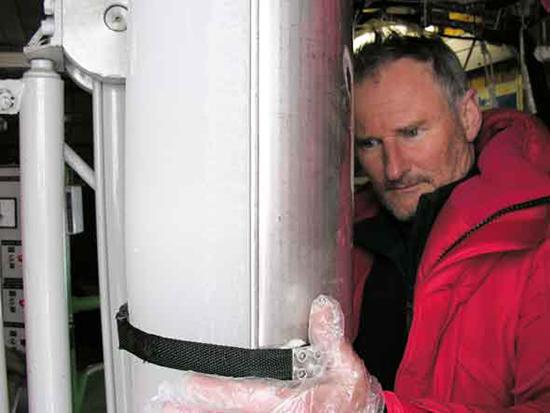
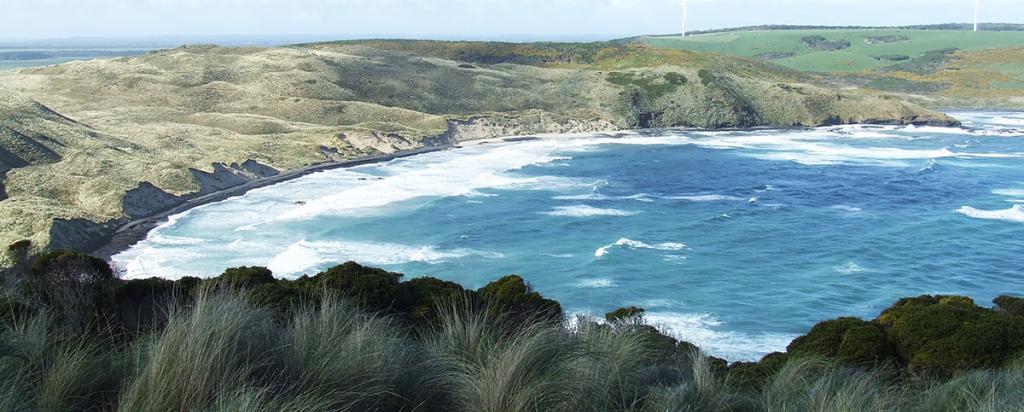
Published on the 18th January 2022 by ANSTO Staff
Key Points
-
Nuclear techniques pioneered at ANSTO can trace or track any element in an earth system that cannot be achieved using other methods
-
Reconstructions using ANSTO’s infrastructure and capabilities provide insights into past climate and environmental changes that are crucial in managing the challenges our planet faces today
-
ANSTO has world-leading expertise in the study of water resources, responding to environmental change and determining the impact of contaminants
ANSTO has played a formative role and continues to make important contributions using nuclear and isotopic techniques to understand past climates and patterns of change, maintain water resource sustainability and provide insights into the impact of contaminants in the environment.
“We may not be the largest research group, but we have some globally-recognised capabilities in environmental science and have made pivotal contributions to climate research,” said Dr Karina Meredith, Lead, Environment research, ANSTO.
The power of nuclear techniques lies in their ability to track or trace any element through any system on Earth, such as in the air and water or in the ground. It enables scientists to measure minute changes in atmospheric gases or negligible levels of contaminants in soil. The instruments are sensitive enough to count individual atoms.
In particular, studies using natural, environmentally sensitive archives, such as ice cores, ocean and lake sediments, tree rings, corals, and glacial deposits, provide an ultra-sensitive means to detect climatic variations in the atmosphere, oceans, polar ice sheets over time.
ANSTO pioneered a method to go back in time by measuring greenhouse gas levels in the atmosphere from air bubbles trapped in the ice over millennia.
Concentrations of stable and radioactive isotopes trapped in the ice can be used to trace greenhouse gases and gauge the timing of glacial retreat, among other processes.

Dr Andrew Smith with a core that has been extracted from the ice
This information can be used to reconstruct the history and rate of change to climate and the landscape.
These reconstructions using ANSTO’s infrastructure and capabilities provide insights into past climate and environmental changes that are crucial in managing the challenges our planet faces today.
Recently, publications from ANSTO researchers and their associates were among those used in the latest Intergovernmental Panel on Climate Change (IPCC) Report.
In particular, the measurement of radiocarbon and other radioactive elements, the cosmogenic nuclides, and X-ray fluorescence scanning have been crucial in deciphering complex environmental information that cannot be provided by other techniques.
ANSTO’s modifications and improvements to an established accelerator technology at the Centre for Accelerator Science made it possible to measure the most minute quantities of carbon, methane, and other elements from samples of past atmosphere captured in ice cores and other environmental proxies.
These measurements enable scientists to determine what the atmosphere on Earth was like thousands to more than hundreds of thousands of years ago.
Bubbles trapped in the ice contain gases from the atmosphere
There were periods in the past when the planet experienced sudden changes in temperature and it is these periods that are of most interest.
The sensitivity of this technique, which was developed by ANSTO accelerator scientists and technicians, is almost beyond comprehension. It is possible to count individual atoms of a particular element, such as carbon, in a sample of a few micrograms.
Clocks in rocks
The use of the cosmogenic nuclides, sometimes referred to as ‘clocks in rocks’, has been equally valuable in understanding the processes that drive the evolution of the landscape.
Measurements of the concentration of cosmogenic radionuclides, such as beryllium-10 and aluminium-26, produced in surface rocks as a result of being bombarded by cosmic rays that manage to penetrate Earth’s atmosphere, reflect changes in the landscape at a given time.
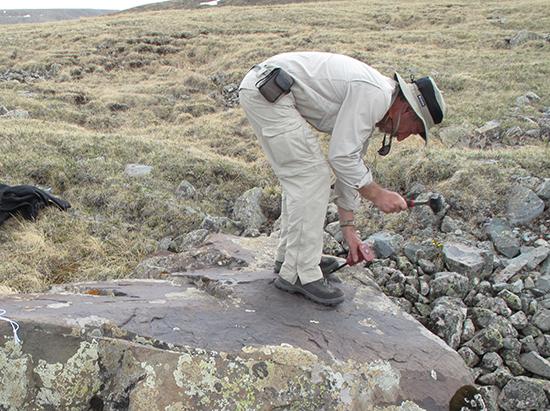
Dr David Fink taking a boulder sample in the field that contains cosmogenic isotopes
Because of this, the cosmogenic radionuclides act like clocks in the rocks.
But the ability to select the right rock or boulder to do the measurements of the cosmogenic nuclides within it is something that takes years of experience.
A number of ANSTO environmental scientists have spent valuable time collecting precious samples in fieldwork at locations across the globe, including Antarctica, which has the most pristine environment on the planet.
Similarly, only ultra-sensitive measurements using ANSTO’s accelerators can detect the incredibly small quantities of these radionuclides.
Mapping elements
Another equally useful nuclear analytical technology, micro X-ray fluorescence scanning, can both identify and measure the quantity of elements in an environmental sample, such as a sediment core from a lake or speleothems from caves. The scanner, which is non-destructive, can also provide useful optical and radiographic images of the environmental samples.
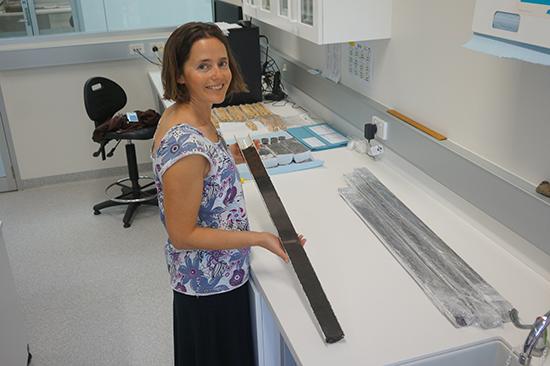
Dr Krystyna Saunders holds a sediment core for analysis on the ITRAX core scanner (not shown)
The instrument has been used across a broad range of research into environmental changes, to study bushfires and volcanic events, or detect the presence of contaminants, among many other studies.
With significant expertise and capabilities in radioactivity measurements, ANSTO offers a suite of methods to detect and measure radioactive elements and radioactive isotopes. Lead-210 and argon-40/potassium-40 are used in the dating of sediment and tritium in the dating of water.
ANSTO is also a world-leading centre in providing the technology and expertise to take measurements of the radioactive gas radon.
Radon: a key indicator of the quality of the atmosphere
ANSTO’s long-term radon monitoring program at global ‘baseline’ stations provides invaluable datasets that are used to refine observations of human-induced trends in atmospheric greenhouse gases and ozone-depleting substances — the principal sources of observational evidence that inform (IPCC) reports on climate change.
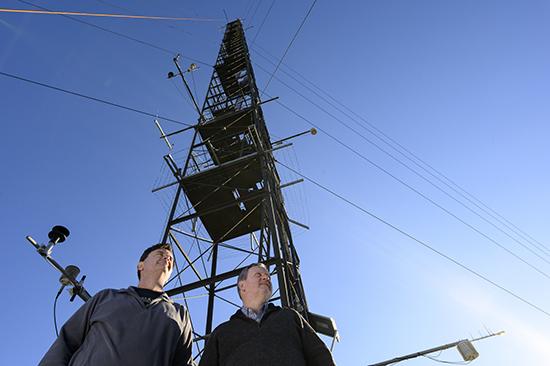
Radon scientists Dr Scott Chambers and Dr Alistair Williams stand near an environmental sampling platform
As well as using radioactive isotopes, ANSTO provides capabilities using stable or non-radioactive isotopes to gain information about climate, water, the ecology of ecosystems, as well as landforms, processes, and their age.
“The suite of techniques enables our researchers and our collaborators to probe and understand changes to the environment in the past or what is occurring now,” said Meredith
Water research at ANSTO assesses the impact of climate and human activity on precious groundwater resources.
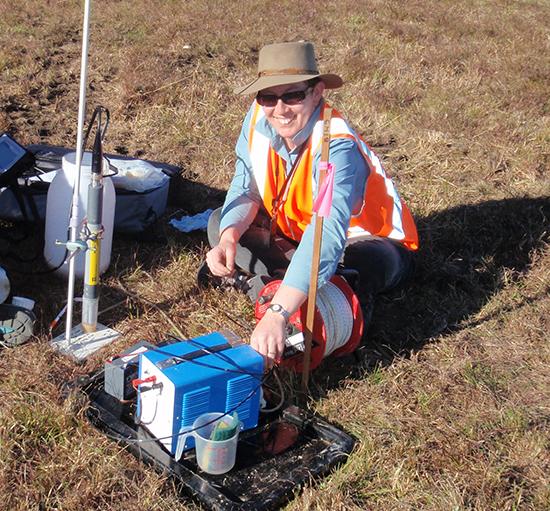
Dr Cath Hughes in the field sampling groundwater for analysis at ANSTO
With research expertise and nuclear tools developed over decades, ANSTO can provide estimates of groundwater recharge and maps of groundwater age and quality and quantify the impacts of decisions on water usage and other human stressors on the health of wetlands and aquatic ecosystems.
ANSTO has also become an established authority on the impact of contaminants in the environment.
The Centre for Accelerator Science has a long-standing program of monitoring and measuring fine particle pollutants in the atmosphere for the safeguarding of human health.
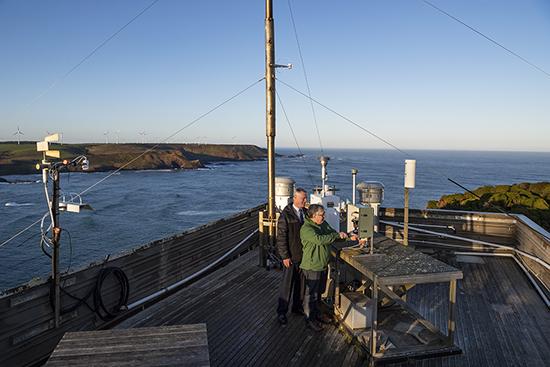
Prof David Cohen and David Garton check the radon detector at the Cape Grim monitoring station
The study of pollutants extends to the impact of contaminants in the environment and their effect on ecosystems.
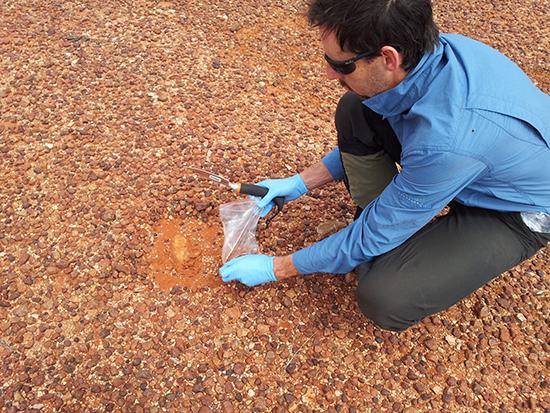
David Child takes oil samples at Maralinga as part of the monitoring of radioactive contaminants
The latest Intergovernmental Panel on Climate Change (IPCC) Report
Scientists have used nuclear techniques and other methods to observe changes in the Earth’s global climate systems, including Australia and Antarctica and across the whole climate system, as explained in the latest Intergovernmental Panel on Climate Change (IPCC) Report, released late last year.
As the IPCC does not conduct its own research, run models or make measurements of climate or weather phenomena, it makes assessments using scientific, technical, and socio-economic publications that have passed peer-review and detailed scrutiny.
The report includes references to more than 14,000 scientific publications with contributions from Australian scientists, including environmental researchers from across ANSTO.
Publications from ANSTO’s Dr David Fink, Dr Quan Hua, Dr Krystyna Saunders, Dr Andrew Smith, and Dr Bin Yang have been used to inform the findings in the recent IPCC report.
These publications use ANSTO’s capabilities and infrastructure in nuclear techniques of analysis to measure the rate of change of past and present climate studies.
“The environment has become the number one issue in Australia and in most places around the world. We will continue to use all our capabilities to inform government, policymakers, and the public on climate and environmental change, “ said Meredith.

